Cloning a PS4 Hard Drive: A Comprehensive Guide
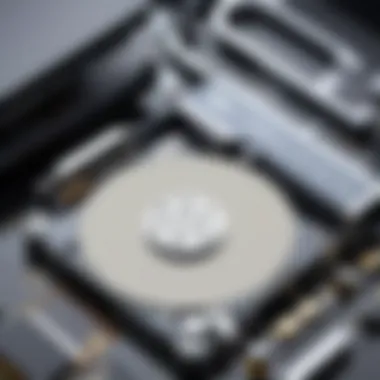
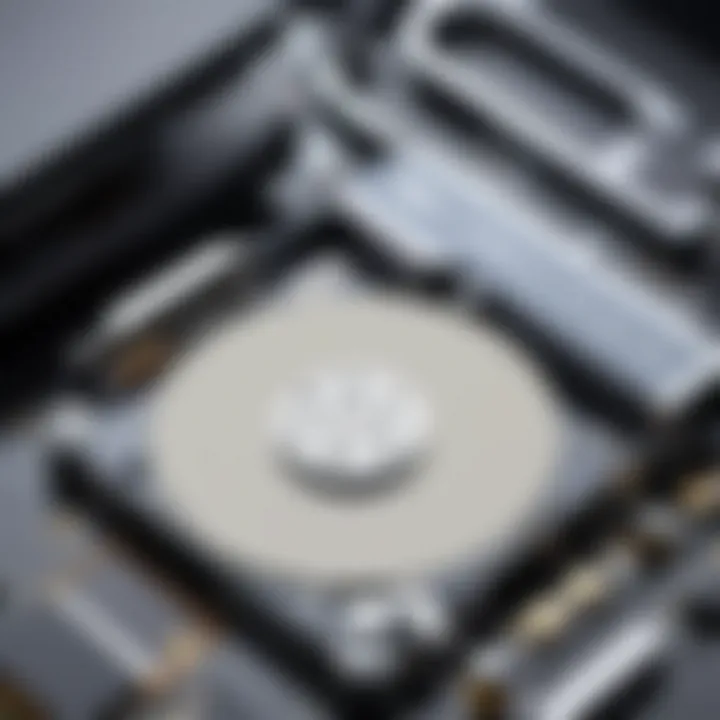
Intro
The process of cloning a PS4 hard drive is more than just a technical maneuver; it involves understanding the needs of the modern gamer and ensuring the best gaming experience. Whether preparing for a larger storage solution or creating a backup of your current setup, cloning can act as a bridge to optimizing performance and utility.
This guide explores why cloning is essential, especially in the context of gaming, where time and data preservation matters. Moving forward, we will dissect the technical specifications behind hard drives, compare available products, discuss practical applications, highlight recent trends in technology, and provide a buying guide for potential upgrades.
Understanding Hard Drive Cloning
Hard drive cloning is a critical process for anyone considering upgrading or backing up their PS4 system. Understanding this concept is essential as it lays the foundation for successful implementation. Cloning your hard drive allows you to create an exact replica of your data and system configurations, offering both convenience and security. This guide will elucidate the key aspects of cloning, emphasizing its practical benefits while addressing common considerations.
Definition of Hard Drive Cloning
Hard drive cloning refers to the process of creating an identical copy of a hard drive's storage contents to another drive. This technique captures all data, including system files, user files, applications, and settings. When done correctly, cloning enables users to switch to a new drive without losing any valuable data. It is advisable to use specialized cloning software for efficiency and accuracy during this process. The result is a fully functional replica that operates just like the original.
Purpose and Benefits of Cloning
The purpose of cloning extends beyond mere convenience; it plays a vital role in ensuring data security, ease of upgrades, and improving system performance. Below are some key benefits:
- Data Security: Cloning is an effective way to safeguard against data loss. In case of a hard drive failure or corruption, having a clone means that users can quickly restore their system.
- Ease of Upgrade: When upgrading to a larger or faster hard drive, cloning simplifies the transition. Rather than reinstalling applications and transferring data manually, the entire system is quickly migrated.
- Performance Improvement: In certain instances, a clone can help improve system performance. By migrating to a newer hard drive technology, like SSD, users may experience faster load times and smoother operations.
Understanding hard drive cloning serves as a necessary first step for anyone engaged in enhancing or protecting their PS4. The benefits outlined highlight why this process is worthy of attention from gamers and tech enthusiasts alike.
Reasons to Clone a PS4 Hard Drive
Cloning a PS4 hard drive is more than just a technical task; it serves several essential purposes that can greatly enhance the gaming experience. The reasons for undertaking this process primarily revolve around the need for increased storage, data security, and overall system performance. Understanding these motivations is crucial for any gamer or tech enthusiast looking to make the most out of their PS4.
Upgrading Storage Capacity
One of the primary reasons to clone a PS4 hard drive is to upgrade storage capacity. The default hard drives in PS4 systems often have limited space, which can quickly fill up with game installations, updates, and downloadable content. When looking for a seamless solution to increase storage, cloning allows users to transfer their existing data and settings onto a larger hard drive. This way, you can keep all your games and save files while benefiting from the added space.
The process of upgrading is quite straightforward. First, you select a new hard drive that meets or exceeds the original’s specifications. After cloning the data, simply replacing the old drive with the new one ensures a smoother transition without the hassle of starting from scratch. This ability to expand storage without data loss is particularly appealing for avid gamers with extensive libraries.
Creating a Backup for Data Security
Another significant aspect of cloning is the capability to create a backup for data security. Losing game data can be a frustrating experience, whether due to hardware failure, accidental deletion, or unforeseen errors. By cloning your original hard drive, you create a safeguard for your valuable files.
This backup acts as a failsafe. Should anything happen to the original hard drive, you have an exact duplicate ready to restore. Making backups is not only prudent but also an often-overlooked practice that can safeguard countless hours of gaming. A regular backup rhythm can provide peace of mind and protect the valuable progress you have made in various games.
Improving System Performance
Lastly, cloning can lead to improving system performance. Often, PS4 users may notice their system running slower as the hard drive fills up with data over time. By cloning to a newer, faster hard drive—especially solid-state drives (SSD)—you can significantly boost loading times and enhance the overall gaming experience. An upgraded hard drive can lead to quicker boot times and reduced latency, making gameplay smoother and more enjoyable.
Required Tools for Cloning
When considering the cloning of a PS4 hard drive, it is vital to have the appropriate tools in hand. Having the right equipment ensures a smoother process, minimizing disruptions that can arise during cloning. This section will discuss both the physical hardware and the software options that are essential for effective cloning.
Physical Hardware Needed
External Hard Drive Enclosure
An external hard drive enclosure serves as a protective case for your hard drive, allowing for easy connection to other devices. It is an essential part of the cloning process because it transforms a bare hard drive into a portable unit, making it accessible to your PS4 or a computer. The key characteristic of a good external enclosure is compatibility with various hard drive sizes and interfaces. This flexibility makes it a popular choice in cloning scenarios.
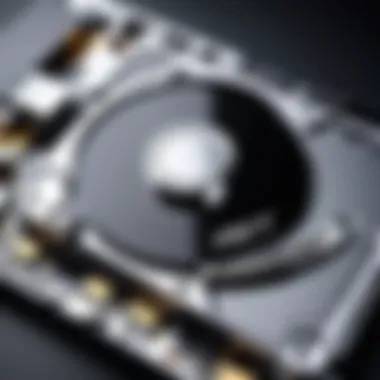
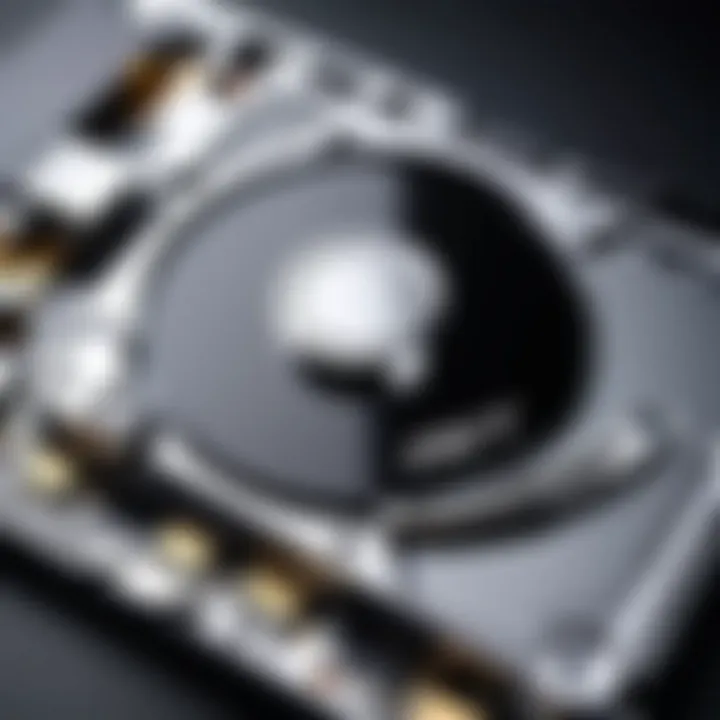
One unique feature of external enclosures is the ability to facilitate high-speed data transfer, which substantially reduces the time required for cloning. On the downside, not all enclosures support all hard drives. Thus, choosing an enclosure that matches your drive’s specifications is important.
USB-C to SATA Adapter
The USB-C to SATA adapter is another crucial tool in the cloning process. This adapter enables connections between your PS4 or computer and the SATA hard drive, making cloning more straightforward. A key characteristic is the speed at which it transfers data; many USB-C adapters support faster transfer rates compared to traditional USB connections.
A unique feature of this adapter is its lightweight design, which makes it convenient for varied setups. However, some users may face compatibility issues with older devices. Still, for most modern systems, it provides an excellent solution for high-capacity transfers.
Compatible Hard Drive
Selecting a compatible hard drive is essential as it directly influences the success of the cloning process. Your chosen hard drive should meet the specifications set by your PS4, focusing on size and speed. A key characteristic of a compatible hard drive is its storage capacity, which should ideally offer more space than your original hard drive for future use.
Notably, solid-state drives (SSDs) can be especially beneficial due to their improved load times and performance compared to traditional hard drives. However, the cost of SSDs may be higher, which could be a disadvantage for some.
Software Options for Cloning
As crucial as the hardware is the software that drives the cloning process. There are various software options available that cater to different user needs, making it essential to choose one that aligns with your goals.
Disk Cloning Software
Disk cloning software creates a complete copy of your hard drive, including all files, settings, and system configurations. This software is crucial for securely duplicating your gaming environment. A key characteristic of popular disk cloning software is ease of use, allowing seamless operation for both novice and experienced users.
One unique feature of many disk cloning applications is their ability to handle partitions efficiently, ensuring that system integrity is maintained. However, some software may require additional licenses for advanced features, which could be a consideration for budget-conscious users.
File Transfer Applications
File transfer applications can be an alternative for users who prefer to transfer individual files as opposed to cloning the entire drive. These apps offer flexibility, allowing users to select specific files or folders for transfer. The key characteristic of file transfer apps is customization in selection and organization of files.
A noteworthy feature of file transfer applications is their potential for streamlining specific tasks without the need for complete redundancy, unlike cloning software. On the other hand, they may not capture the entire system state, which could lead to loss of data or settings if not managed carefully.
By understanding these required tools and their functionalities, users will be better equipped to effectively clone their PS4 hard drive. This preparation leads to a successful transition and enhances the overall gaming experience.
Pre-Cloning Preparations
Preparing for the cloning of a PS4 hard drive is a crucial step that can significantly impact the success of the entire process. This phase ensures that the system runs smoothly and reduces the chances of data loss or system errors, which can be frustrating for gamers and tech enthusiasts alike. Proper preparations not only safeguard your valuable data but also set the stage for a successful migration to the new hard drive. Overall, it is imperative to take these preparatory measures seriously to avoid complications later.
Backing Up Important Data
Before commencing the cloning process, it is vital to back up important data. While cloning effectively duplicates the entire hard drive, unforeseen events such as software glitches or hardware malfunctions can still occur. By making a backup, you protect your saved games, settings, and any downloadable content that you do not want to lose.
- Choose Backup Location: Select an external storage device, such as a USB flash drive or an external hard drive, where you can easily store your important files. Ensure the storage has sufficient space to accommodate the data you intend to back up.
- Manual Backup Method: You can manually transfer files. Connect your external storage to the PS4, navigate to your game data or saved files, and copy them. This method allows you to selectively back up only the files you deem necessary.
- Using PS4 Backup Utility: Alternatively, use the built-in backup utility of the PS4 which simplifies the process. Go to the settings menu, find "System," and then select "Backup and Restore". Choose "Back Up PS4" and follow the prompts.
This backup process only takes a short while, and it's a small effort that can save hours of frustration down the road.
Ensuring System Updates
Making sure the PS4 is up to date is another essential preparation measure. Updates often contain important patches, performance improvements, and new features. Cloning an outdated system may lead to complications during or after the cloning process. Here’s how to ensure your PS4 is updated:
- Check for Update: Go to the settings menu, scroll to "System Software Update," and select it. The system will look for available updates. If an update is present, follow the prompts to download and install it.
- Automatic Updates: You can also set your PS4 to automatically download updates. Under the settings menu, go to "Power Save Settings" and then "Set Functions Available in Rest Mode". Make sure to check "Stay Connected to the Internet" and "Enable Turning on PS4 from Network". This ensures that the system updates itself during rest mode, so you won't need to do it manually.
By ensuring that your PS4 is current with the latest software, you not only enhance the overall user experience but also minimize any potential issues that might arise post-cloning.
Important Note: Always read the update details before installation. Occasionally, updates may change game compatibility or system settings.
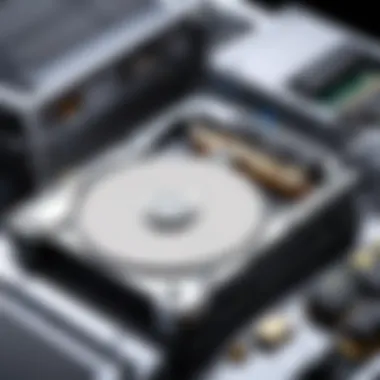
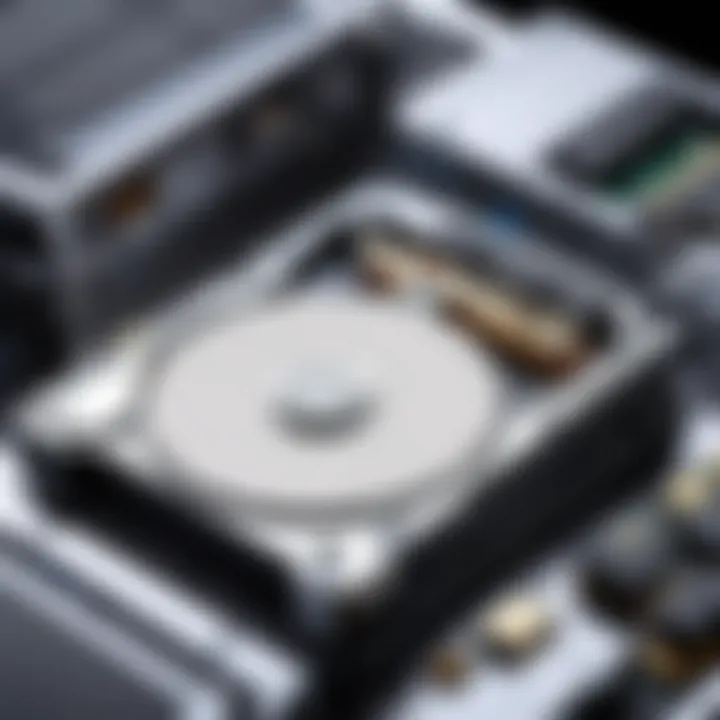
Step-by-Step Cloning Process
The step-by-step cloning process is a crucial aspect of successfully transferring data from one hard drive to another. This methodical approach ensures that no important data gets lost during the transition. Understanding how to carry out these steps can save time and prevent frustrations, particularly for gamers eager to enhance their PlayStation 4 experience. By following a structured process, you not only safeguard your existing data but also create an opportunity for upgrading your storage capacity effectively.
Connecting the Drives
The first step in this process is connecting the drives. This involves physically attaching your original PS4 hard drive and the new hard drive, which could be either an upgrade or a backup. Depending on your choice of connection method, you may need an external hard drive enclosure or a USB-C to SATA adapter.
When connecting the drives, ensure that the power is off to avoid any possible damage. Once they are connected, you can power on your system and navigate to the cloning software. This initial connection sets the stage for a smooth cloning process, allowing the software to recognize both drives.
Running the Cloning Software
Once the drives are connected, running the cloning software is your next action. Choosing the right software is essential for ensuring the cloning process runs efficiently. Popular options include Acronis True Image and Macrium Reflect. These programs generally guide you through the cloning process with user-friendly interfaces.
During this phase, you will select your source drive—where the data is coming from—and the destination drive—where the data will be copied. Make sure to double-check your selections. This small detail can have a significant impact, especially if you accidentally overwrite data.
"Data loss occurs when you least expect it. Always keep track of your selections when cloning drives."
After making your selections, initiate the cloning process. Monitor the progress, as this will take some time depending on how much data you are transferring. Following the software instructions closely will help ensure you complete this step successfully.
Verifying the Cloned Data
Verification is often overlooked but is vital for a successful cloning operation. Once the software finishes cloning, it is wise to check the integrity of the cloned data. This involves comparing files on both the original and the new hard drive to confirm that they match.
You can do this manually, file by file, or use the built-in features of your cloning software that typically offers data verification tools. This ensures the added hard drive is not only functional but also contains all necessary files and intact data. If any discrepancies arise, you may need to repeat the cloning process.
Through these careful steps—connecting the drives, running suitable software, and verifying the data—you can confidently navigate the cloning process. By focusing on these elements, you greatly improve the success rate of your hard drive cloning efforts.
Post-Cloning Considerations
Once the cloning process is complete, the next critical phase involves addressing post-cloning considerations. This step is essential for ensuring that the new hard drive operates effectively and seamlessly integrates with the PS4 system. Ignoring these considerations can lead to performance issues, data loss, or diminished functionality of the gaming console. Thus, understanding how to properly install the new drive and how to adjust the system settings accordingly is imperative for optimizing the overall gaming experience.
Installing the New Hard Drive
After the cloning process, the first task is to physically install the new hard drive into the PS4. This process requires caution to avoid damaging any components. Here’s a step-by-step approach for installation:
- Power Down the PS4: Ensure that the console is completely turned off and unplugged from the power source.
- Remove the Cover: Depending on the PS4 model, remove the outer shell. Typically, this requires sliding or using a small tool to gently pop off the cover.
- Locate the Hard Drive Bay: Locate the hard drive compartment, which is usually on the side of the console.
- Remove the Old Drive: Carefully unscrew and pull out the old hard drive from its bay.
- Insert the Cloned Drive: Place the new drive into the hard drive bay. Make sure it aligns properly and securely hold it in place.
- Reattach Cover: After securing the drive, put the outer shell back on the console, ensuring there are no loose parts.
- Power On the PS4: Finally, connect the power supply and turn on the console to ensure that it recognizes the new hard drive.
This step is crucial. If done improperly, it could lead to problems like the console failing to boot or not recognizing the drive.
Adjusting System Settings
Once the new hard drive is installed, the next step is to adjust the system settings. This ensures that the PS4 optimally utilizes the cloned drive and enhances performance. Here’s how to proceed:
- System Initialization: Upon powering on the console, the PS4 may prompt for initialization. Follow the onscreen instructions to set up the console anew, ensuring the system recognizes the new drive.
- Check Storage Space: Navigate to the settings menu and check under storage. Verify that the cloned drive displays the correct storage capacity. If the space does not reflect expectations, it may have not cloned properly.
- Reinstall Updates: If you had previous updates or games, installing any necessary system updates ensures compatibility with the new hard drive.
- Transfer Data: For those who may not have cloned their games or saved files but want to transfer them, consider using cloud services or a USB stick as alternatives to restore data.
- Customization of Settings: Adjust any settings relevant to your gaming preferences, including user accounts and game preferences. This personalizes your gaming experience and can lead to better performance.
Common Issues and Troubleshooting
Understanding common issues related to cloning a PS4 hard drive is crucial. Despite careful planning and execution, errors can occur during the cloning process. Recognizing these potential problems and knowing how to tackle them can save time and prevent data loss. This section addresses the most prevalent issues that users may face and provides effective solutions to handle them.
Cloning Software Errors
Cloning software errors can arise from various sources. Sometimes, the software itself may have bugs or be incompatible with your operating system. Other times, the error could stem from how the software interacts with the hard drives involved. Key examples of these errors include failed cloning attempts and incomplete data transfers. These issues can frustrate users and lead to anxiety about data integrity.


One common mistake involves not running the software with administrator privileges, which can limit functionality. Also, if your system lacks sufficient RAM or processing power, the software may not run smoothly. To mitigate these problems, ensure that your software is up to date. Always check the software documentation for specific requirements and recommended settings.
If an error arises while cloning, consider these steps:
- Reboot your system – This can help reset any temporary glitches.
- Check your connections – Ensure cables are firmly connected.
- Try an alternate USB port – Sometimes, the port may have issues.
- Consult the software’s support page – They often list common errors and fixes.
"Effective troubleshooting can turn a frustrating experience into a simple solution."
Hardware Compatibility Problems
Hardware compatibility is another aspect that can significantly affect the cloning process. The intended replacement hard drive must be compatible with your PS4. For instance, some drives may not fit well within the PS4 due to size variations, while others may not support the required read/write speeds.
Moreover, the existing hard drive can also play a role. If the initial drive is damaged or failing, cloning efforts may yield corrupted data. Identifying whether both drives meet compatibility standards is vital. This includes ensuring that the interfaces match, such as SATA connections.
To avoid hardware compatibility issues:
- Check specifications of both your current and new hard drives.
- Read user reviews on specific drives to see if others faced similar issues.
- Update firmware for your drives when possible, as it can resolve many incompatibilities.
By taking these precautions, you can create a smoother path towards successfully cloning your PS4 hard drive.
Maximizing Performance Post-Clone
After successfully cloning your PS4’s hard drive, attention must shift to ensuring optimal performance. Cloning not only transfers data but also offers an opportunity to enhance the overall efficiency of your gaming system. This section discusses key elements to consider to maximize performance after the clone.
Optimizing Drive Settings
The first step in maximizing post-clone performance is to adjust the settings of your newly installed hard drive. It is important because improper settings can lead to reduced speed and efficiency. Here are some areas to focus on:
- File System Formatting: Ensure your drive uses the right file system. For PS4, the exFAT or FAT32 formats are the most compatible.
- Adjusting Cache Settings: Some drives allow you to manage cache levels. Using the right cache settings can significantly improve load times and responsiveness, especially for larger games.
- Defragmentation: While SSDs do not require defragmentation, HDDs benefit from this process by organizing fragmented data, thus enhancing access time. Perform regular defragmentation on HDDs to maintain speed.
"Optimized settings bring the best out of your upgraded hardware, ensuring your gaming experience is smooth and enjoyable."
Regular Maintenance Tips
Maintaining optimal performance requires ongoing care. Regular maintenance helps prevent issues that could hinder your PS4’s efficiency. Here are some practical maintenance tips:
- Monitor Storage Space: Regularly check the available storage space. Keeping at least 10-15% free can help prevent slowdowns.
- Keep the Drive Clean: Dust and debris can accumulate in the PS4’s hardware. Regularly clean the components to avoid overheating and performance drops.
- Run System Updates: Ensuring your system software is updated can help take full advantage of the latest optimizations and features.
- Check Drive Health: Use SMART monitoring tools to periodically assess the health of your hard drive. This can give you early warnings if the drive begins to fail.
Deploying these strategies will greatly enhance the performance of your PS4 post-clone, ensuring a seamless gaming experience.
Finale
Cloning a PS4 hard drive is not merely a technical exercise; it is a crucial step in ensuring that your gaming experience remains seamless and robust. As explored throughout this guide, the benefits of cloning are manifold. A well-executed clone not only enhances storage capacity but also serves as insurance against data loss, giving gamers peace of mind regarding their precious game saves and downloaded content.
In summary, the process of cloning allows you to upgrade your PS4 to a larger or faster drive without losing any important files. Furthermore, optimizing your system post-clone can significantly improve load times and overall performance of your games. The steps outlined in prior sections—ranging from preparation to troubleshooting—are designed to facilitate a smooth transition from the old drive to the new one.
Summary of Key Points
- Purpose of Cloning: Primarily, cloning a PS4 hard drive serves to improve storage and secure data.
- Required Tools: Both hardware and software are essential for effective cloning. These include external enclosures, adapters, and cloning software.
- Cloning Process: The step-by-step guide ensures that even those unfamiliar with technology can perform the task successfully.
- Post-Cloning Optimization: It is not enough to just clone. Adjusting settings and performing maintenance are vital for achieving the best performance.
By understanding these aspects, you are better equipped to make informed decisions about your PS4's storage solutions.
Final Recommendations
- Choose the Right Hardware: Select a hard drive that can handle the demands of modern gaming while also taking into account your budget.
- Regular Backups: Even after cloning, ensure that you routinely back up your data. External drives like the Samsung T5 or Western Digital My Passport are good options for this.
- Stay Updated: Keep your PS4 updated to benefit from improved performance and security patches.
- Utilize Optimization Software: Consider using applications like Defraggler or CCleaner post-cloning to maintain drive health and speed.
"An informed choice in storage can profoundly impact your gaming experience."
Following these recommendations will not only simplify the cloning process but also enhance your overall experience with the PS4. Thus, the act of cloning transforms your console into a more powerful gaming machine, preserving the memories and data made along the way.







